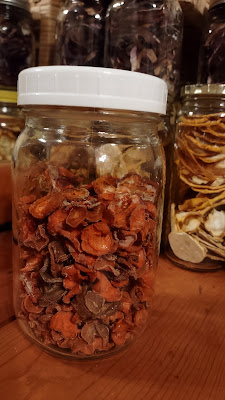Homesteading Frugal
The daily life of a homesteader is always looking for ways to stretch money, so as to be more self-sufficient. We all need to be living a more frugal life especially during inflationary periods. Learning how to preserve food is a good frugal homestead skill to learn.
Homesteading and being frugal go hand in hand like peanut butter and jelly. It's like living a life where you're a bit of a DIY champ and you make everything you can instead of buying it.
So, when you're homesteading, you're all about being resourceful and self-sufficient. You grow your own veggies, raise chickens, maybe even harness solar power – all these things help you save money and reduce your reliance on the big, expensive world out there.
And being frugal? Well, that's all about being smart with your money. You're the kind of person who knows how to make things last, hates wasting stuff, and looks for deals like a pro.
Homesteaders and frugal folks both hate waste, so they're into things like preserving food, making their own stuff, and using what they've got instead of buying new. Plus, they're choosy when they do need to spend – opting for quality over quantity.
They're also big on being eco-friendly and energy-efficient, which saves both the environment and your wallet. And by growing and preserving your food, you're cutting grocery costs and having delicious, homegrown meals year-round.
Both groups also tend to be minimalists, not into the whole buy-everything-you-see lifestyle. They focus on the essentials and avoid overspending.
And in the end, it's not just about saving money; it's about gaining financial independence. You're trying to rely less on your 9-to-5 job and more on your skills and the things you can do yourself.
So, whether you're homesteading on a farm or just trying to make your city apartment more self-sufficient and thrifty, the homesteading-frugal combo is all about living smart, being resourceful, and making the most out of what you've got. It's a pretty cool way to live!
This week I had a bunch of carrots and knew that if I didn't preserve them they might go to waste. I put a good bit in the fridge to add to my cooking, and to eat fresh. The rest I decided to preserve by dehydrating them.
Dehydrating Carrots at Home
Dehydrating carrots at home is a great way to preserve this nutritious vegetable for long-term storage. Dehydrated carrots are versatile and can be used in various recipes, such as soups, stews, and as a healthy snack. Here's a step-by-step guide on how to dehydrate carrots at home:
Steps:
Select and prepare the carrots: Choose fresh and clean carrots. Wash them thoroughly to remove any dirt or debris. You can either peel the carrots or leave the skin on, depending on your preference. If using older carrots, consider removing any tough, woody cores.
 |
| Fresh Carrots to Dehydrate |
Slice the carrots: Slice the carrots into uniform pieces to ensure even drying. You can cut them into rounds, strips, or any shape you prefer.
 |
| Sliced Carrots to Dehydrate |
Blanch: To preserve the color and texture of the carrots, you can blanch them briefly in boiling water for about 2-3 minutes or you can steam blanch them as I do. Then, immediately plunge them into ice water to stop the cooking process. This step is optional but can help maintain the quality of the dehydrated carrots.
 |
| Steam Blanching Carrots to Dehydrate |
Arrange on the dehydrator trays: Place the carrot slices in a single layer on the dehydrator trays. Make sure there is some space between the slices to allow for proper air circulation.
 |
| Carrots Arranged on Dehydrator Tray |
Set the dehydrator temperature: Follow your dehydrator's instructions, but typically, you'll want to set it to around 125°F (52°C). The drying time can vary, but it usually takes 6-12 hours, depending on the thickness of the slices, humidity, and your specific dehydrator.
Check for doneness: Periodically check the carrots as they dry. They should be completely dry, brittle, and no moisture should be left. The drying time can vary, so be patient.
Cool and store: Once the carrots are fully dehydrated, allow them to cool completely. Store them in an airtight container or vacuum-sealed bags in a cool, dark place. Label the container with the date to monitor freshness.
 |
| Dehydrated Carrots |
If you don't have a food dehydrator, you can also dehydrate carrots in the oven at the lowest temperature setting with the oven door slightly ajar. However, using a dehydrator is more energy-efficient and convenient for this purpose.
Dehydrated carrots can be rehydrated by soaking them in water or adding them directly to soups and stews. They're also a nutritious and convenient snack option.
Happy frugal living!
Comments
Post a Comment